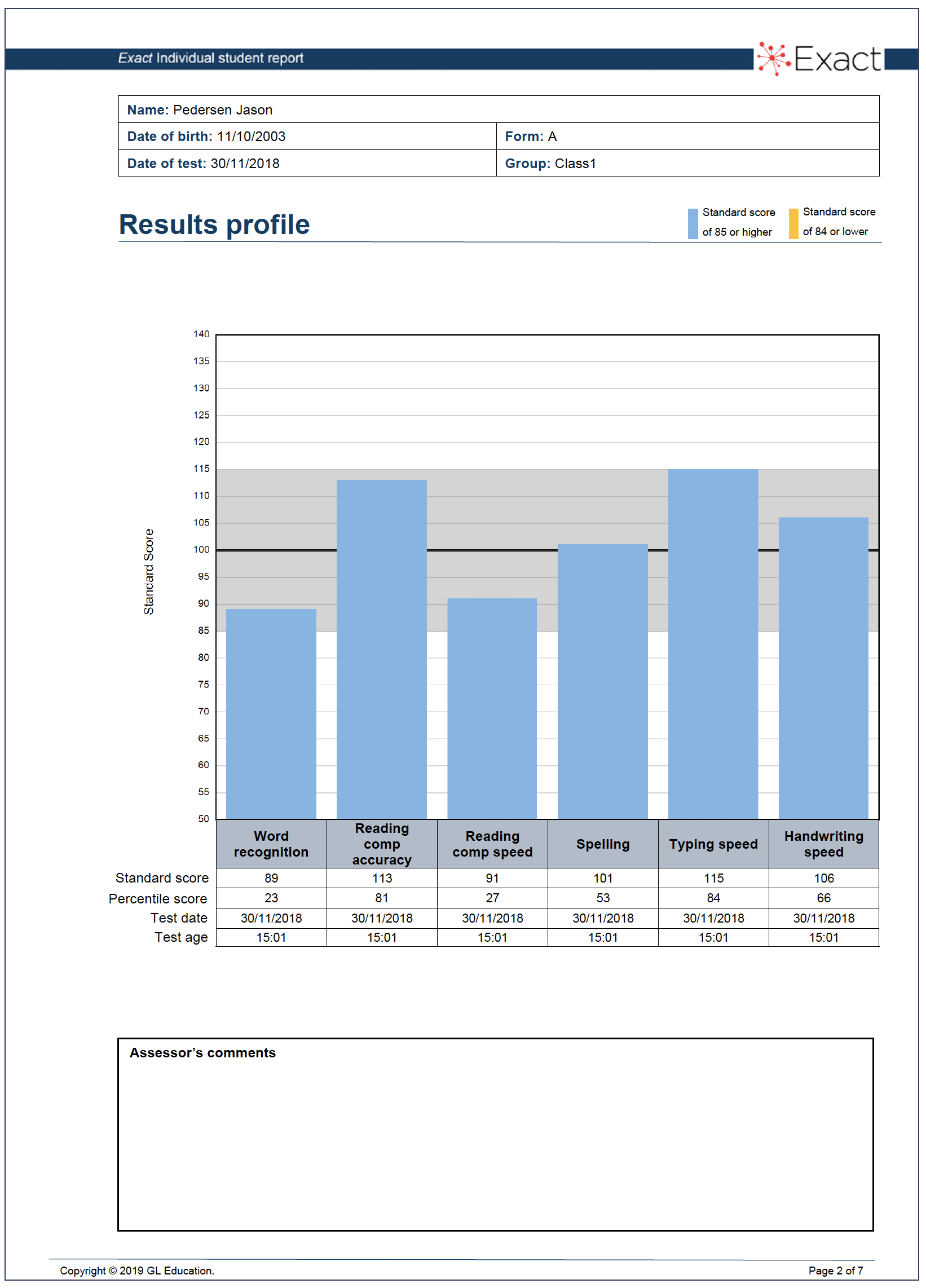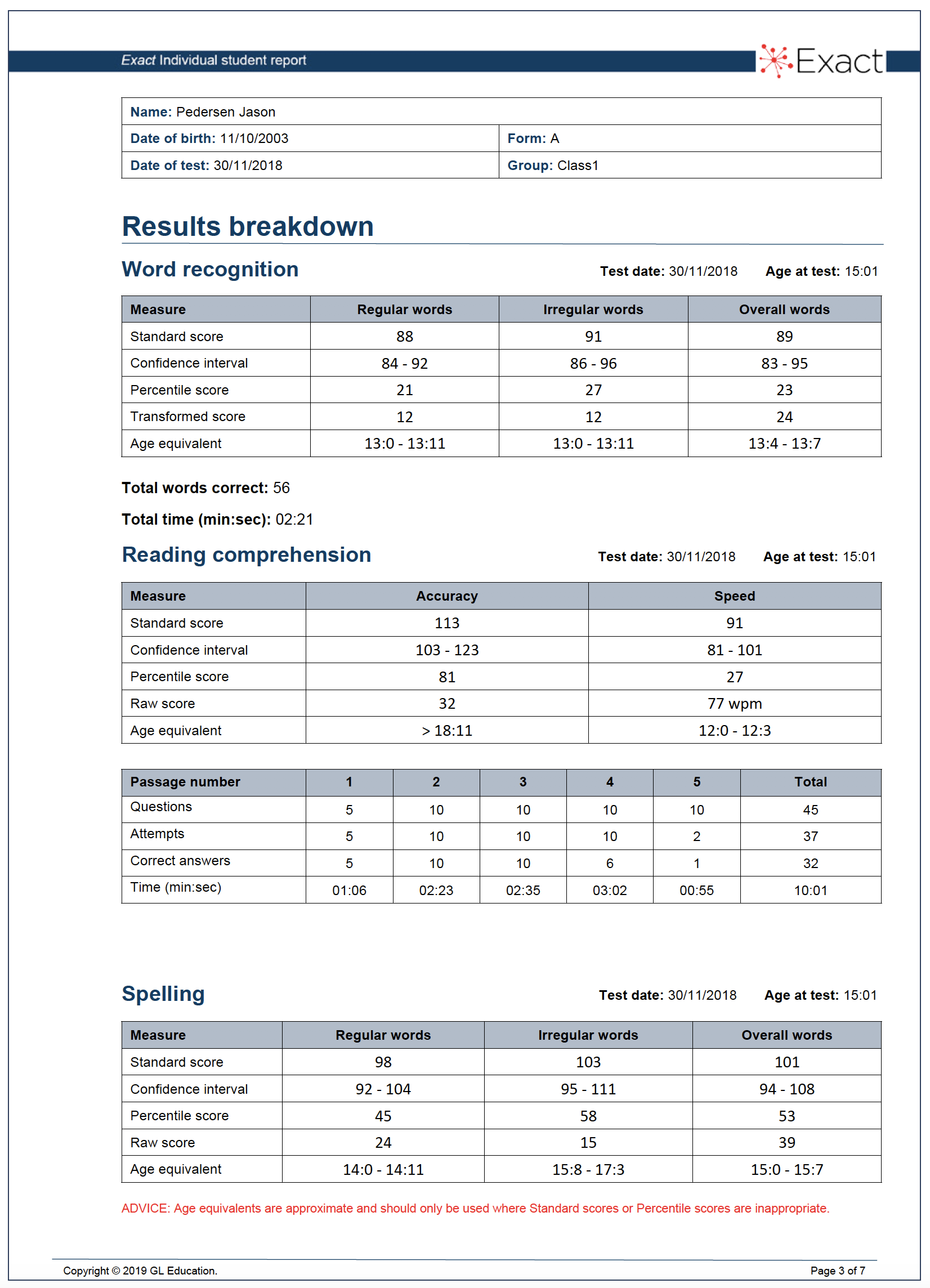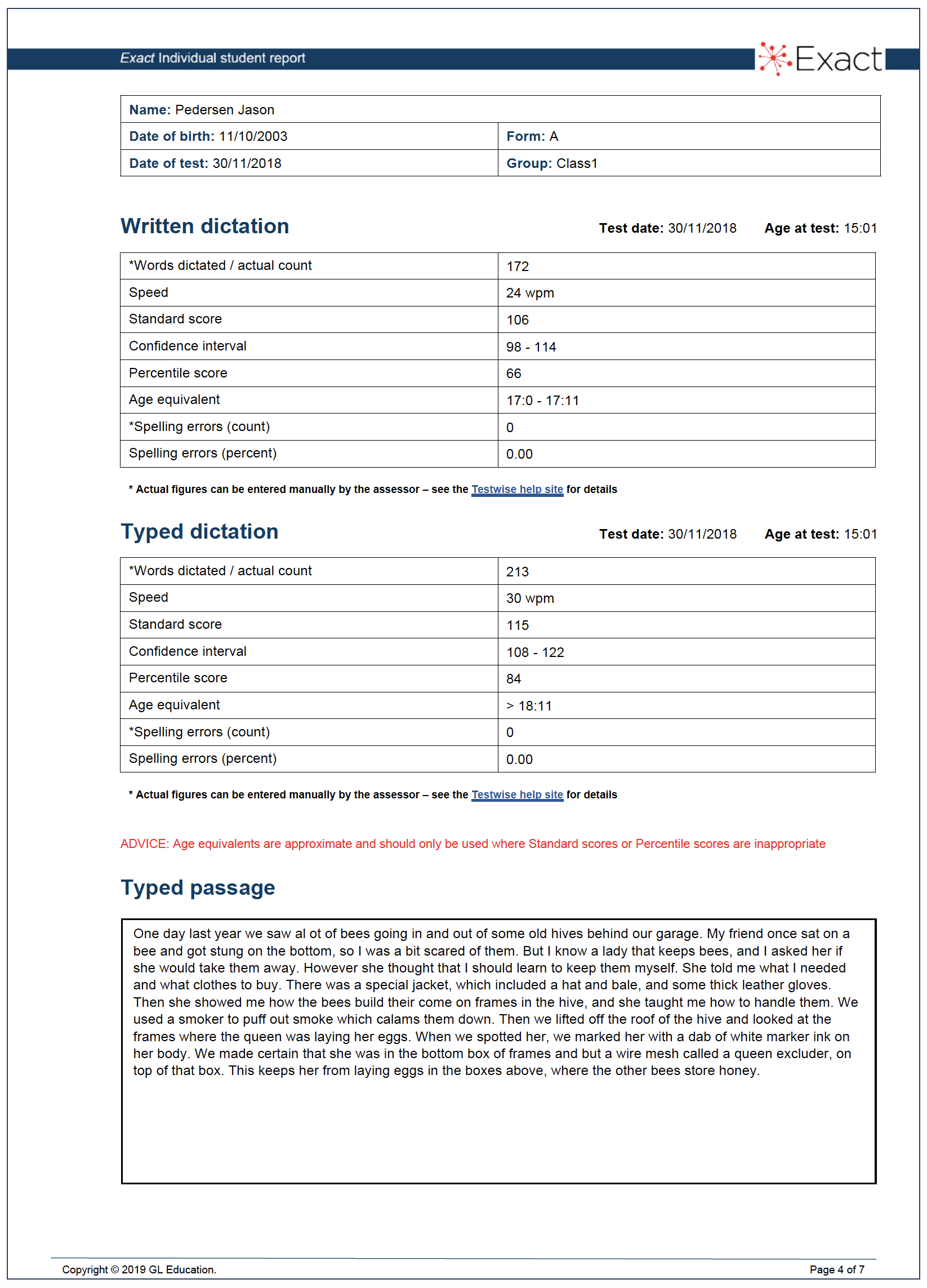Case C: a 15-year-old of average ability
Results profile
See Figure 10. Although this student has a wider spread of scores than Case B, they are all within the normal range. He has performed less well in the two tests where speed is important (word recognition and reading comprehension speed) which suggests that he is a slow but conscientious worker.
He types well, but his handwriting is good and he does not use a keyboard in class, so he will not be allowed to use a keyboard in exams, although he should obviously use one for as much coursework as possible. However, if use of a word processor were his normal practice in school he would now be able to use it in the exam.
Results breakdown
See Figure 11. The reading comprehension scores show that he took longer than usual on each passage but that this paid off because he got full marks on all the first three passages, even though it only allowed him 55 seconds on the fifth passage.
Conclusion
There are no grounds for access arrangements in this case.

Figure 10. Results profile for Case C

Figure 11. Results breakdown for Case C


